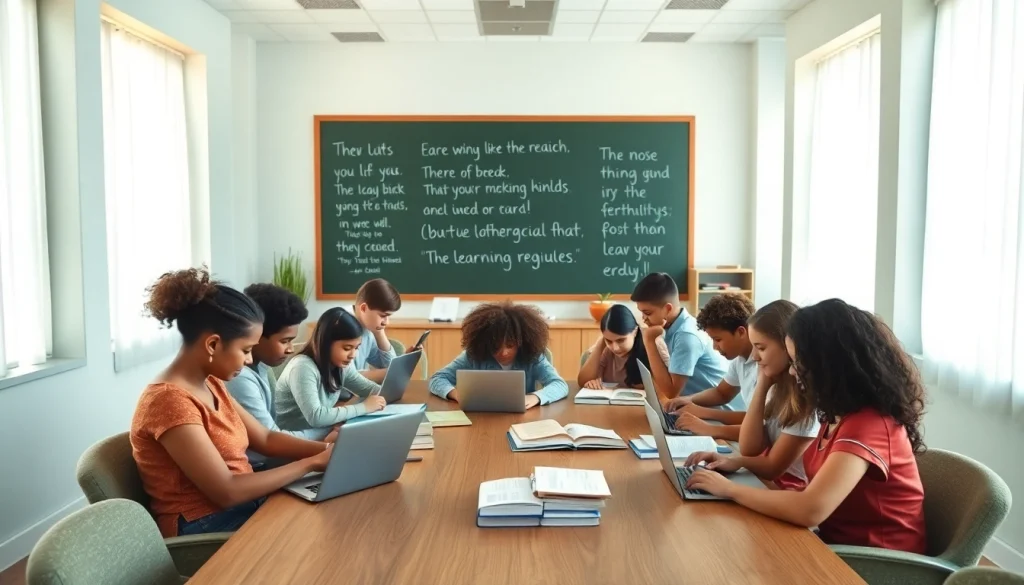
Understanding Educational Resources
In today’s rapidly evolving educational landscape, access to a variety of educational resources is crucial for effective learning. Educational resources encompass a broad range of materials and tools designed to aid in the teaching and learning process. This article delves into what educational resources are, their types, and their significance in fostering a conducive learning environment.
What Are Educational Resources?
Educational resources refer to any materials that can help individuals acquire knowledge, skills, or competencies. These resources can take various forms, including textbooks, videos, online courses, articles, and interactive tools. They are essential in education because they support a range of learning styles and provide access to information that may not be available through traditional learning methods.
Types of Educational Resources
There are multiple types of educational resources available, each serving different educational needs:
- Printed Materials: Textbooks, workbooks, and articles that are traditionally used in classrooms.
- Digital Resources: Online courses, e-books, and educational websites that provide immediate access to information.
- Multimedia Tools: Videos, podcasts, and animations that can enhance understanding through visual and auditory means.
- Open Educational Resources (OER): Freely accessible, openly licensed content that can be used for teaching, learning, and research.
The Importance of Educational Resources in Learning
Educational resources play a critical role in enhancing the quality of learning. They provide learners with diverse perspectives and enriched context, making learning more engaging. Moreover, these resources help to:
- Support differentiated instruction, allowing educators to tailor learning experiences to individual needs.
- Encourage self-directed learning, giving students the ability to pursue topics of interest at their own pace.
- Facilitate collaboration and discussion among learners, fostering a community of inquiry.
Finding Quality Educational Resources
Identifying quality educational resources can be daunting, given the sheer volume of available materials. This section will guide you through effective strategies for locating and evaluating educational resources that meet your specific needs.
Where to Search for Educational Resources
There are numerous platforms and avenues to explore when searching for educational resources:
- Online Libraries and Databases: Platforms like Google Scholar, ERIC, and JSTOR can provide access to academic articles and research studies.
- Open Educational Resource Repositories: Websites like OER Commons and OpenStax offer a wealth of free educational materials across various subjects.
- Educational Institutions: Many universities and colleges provide open access to course materials, lecture notes, and recorded classes for free.
- YouTube and Educational Channels: Numerous educational YouTubers and channels specialize in delivering high-quality educational content that can enhance understanding.
Evaluating the Quality of Educational Resources
Not all educational resources are created equal. To ensure you are using high-quality materials, consider the following criteria:
- Authority: Check the credibility of the author or the institution that produced the material.
- Accuracy: Verify the factual correctness of the content by cross-referencing with trusted sources.
- Relevancy: Ensure the resource aligns with your learning objectives and the curriculum.
- Accessibility: Consider if the resource is easy to access and free from technical issues.
Common Challenges in Resource Discovery
While searching for educational resources, many educators and learners face challenges, such as:
- Information Overload: With so many resources available, it can be difficult to sift through the noise to find valuable content.
- Quality Variation: Differentiating between high-quality and low-quality resources requires careful inspection and evaluation.
- Rapid Changes: Educational resources may become outdated quickly, particularly in fast-evolving fields like technology and science.
To combat these challenges, developing a systematic approach to resource discovery can help streamline the process and improve outcomes.
Integrating Educational Resources into Learning
Once quality educational resources are found, effective integration into the learning process is crucial for maximizing their benefits. This section explores strategies for seamless integration.
Strategies for Incorporating Resources
Incorporating educational resources can be achieved through various innovative approaches:
- Blended Learning: Combine traditional face-to-face teaching with online resources to create a more dynamic learning experience.
- Project-Based Learning: Utilize resources to support hands-on projects that allow students to apply theoretical knowledge in real-world scenarios.
- Flipped Classroom: Assign educational videos or readings as homework, leaving classroom time for discussion and practical application.
Balancing Traditional and Digital Educational Resources
While digital resources are increasingly popular, a balanced approach ensures comprehensive learning experiences. Consider the following:
- Use traditional resources, like textbooks and printed materials, to provide foundational knowledge before introducing digital tools.
- Incorporate digital simulations and interactive content to enhance understanding of complex concepts.
- Combine formal lectures with online discussions and forums to foster engagement and collaboration.
Examples of Effective Integration
Several educational institutions have successfully integrated various resources into their curricula. Here are notable examples:
- MIT OpenCourseWare: MIT’s initiative allows global access to a wealth of course materials, demonstrating how educational resources can transcend geographical boundaries.
- Khan Academy: This organization provides free online courses and instructional videos that allow students to learn at their own pace, exemplifying the effectiveness of blended learning.
- University of Edinburgh: Their adoption of the flipped classroom model illustrates how traditional learning can be enhanced with digital resources, improving student engagement.
Creating Your Own Educational Resources
In some instances, existing educational resources might not meet specific needs or learning objectives. Creating custom resources can facilitate personalized learning experiences. This section outlines steps and best practices for resource creation.
Steps to Develop Custom Educational Resources
Developing your own educational resources requires careful planning and execution. Follow these steps to create effective materials:
- Identify Learning Goals: Determine the objectives of the resource and the target audience.
- Research Content: Gather information from credible sources to build the foundation of your resource.
- Design the Material: Choose a format that best suits the content and engages the audience (e.g., videos, infographics, interactive quizzes).
- Test and Revise: Pilot the resource with a small group and gather feedback to make necessary adjustments.
Best Practices for Resource Creation
To enhance effectiveness, adhere to these best practices during resource creation:
- Incorporate Multimedia: Utilize various formats, including visuals, animations, and audio to cater to different learning styles.
- Keep it Accessible: Ensure that resources are accessible to all learners, including those with disabilities.
- Encourage Collaboration: Design resources that promote teamwork and collaboration among learners, reflecting real-world applications of content.
- Ensure Alignment: Align resources with educational standards and curricula to maintain relevance and effectiveness.
Tools for Creating Educational Resources
There are numerous tools available for educators and learners to create their own educational materials:
- Camtasia: A powerful video editing software that allows users to create engaging video tutorials.
- Canva: An easy-to-use graphic design platform suitable for creating visuals, infographics, and presentations.
- Google Slides: A collaborative tool that educators can use to build interactive presentations.
- Articulate Storyline: A widely used e-learning authoring tool that helps create interactive online courses.
Measuring the Impact of Educational Resources
Evaluating the effectiveness of educational resources is essential to ensure they meet learning objectives and provide value. This section discusses metrics and methods to measure impact.
Key Metrics for Evaluating Resource Effectiveness
When measuring the impact of educational resources, consider the following metrics:
- Engagement Rates: Track how actively students use and interact with the resources provided.
- Assessment Performance: Analyze student performance before and after using the resource to gauge its effectiveness.
- Feedback Scores: Gather qualitative feedback from learners regarding their experiences and satisfaction with the resources.
- Retention Rates: Monitor the knowledge retention levels of students to determine if resources have lasting educational impacts.
Feedback Mechanisms for Continuous Improvement
To foster a culture of continuous improvement, implement feedback mechanisms that allow for ongoing evaluation of educational resources. Consider the following:
- Surveys and Polls: Regularly distribute surveys to gather insights about the effectiveness and user experience of educational resources.
- Focus Groups: Conduct focus groups with learners and educators to discuss strengths and areas for improvement regarding resources.
- Iterative Reviews: Set up a schedule for periodically reviewing resources to ensure they remain relevant and effective over time.
Case Studies: Successful Implementation of Educational Resources
Examining successful implementations of educational resources can provide valuable insights into best practices. Below are three noteworthy case studies:
- Georgia Tech’s Online Master’s Program: Utilizing a mix of OER and traditional resources, this program increased accessibility for students while maintaining high graduation rates.
- Open University: This institution has successfully integrated OER into its curriculum, leading to improved learner outcomes and increased enrollment.
- Michigan State University’s Digital Commons: Their initiative has made scholarly publications more accessible to the public, enhancing knowledge dissemination and collaboration among researchers.






